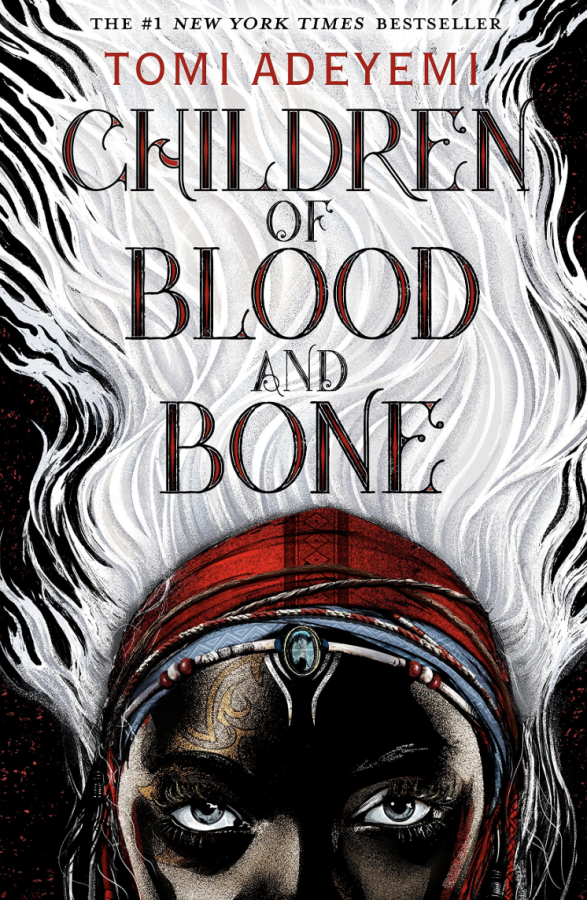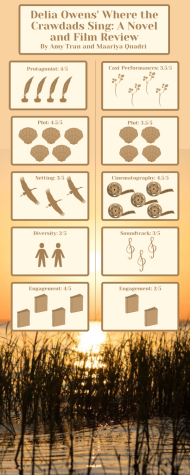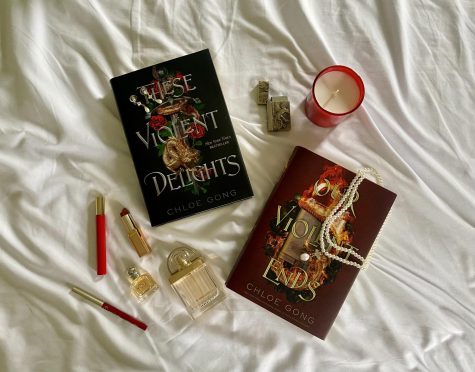‘Children of Blood and Bone’ Stuns With Rich World and Deep Message
I started reading the book Children of Blood and Bone just as another fantasy novel to pass the time over winter break. I soon realized that while it had many of the common characteristics and plots of any fantasy book, it included a new and unique magical world that I quickly grew to love. The characters were one of a kind and many of the themes were relatable to today’s society, despite being apart of a completely different world. I was first introduced to the book by my English teacher, Mrs. Gwizdala, who agrees with me saying that it “sort of had those fantasy aspects that you get from the Hunger Games and Harry Potter that immediately sucks you in.” However, what was unique about this novel was its underlying message and allegorical nature.
Children of Blood and Bone, Tomi Adeyemi’s debut novel, takes place in the magical world of Orïsha. In it, the main protagonist, Zélie Adebola, constantly reminisces of the time when her world used to hum with magic and when the different magical tribes ruled, with Tiders creating waves, Burners igniting flames, and Reapers summoning enough souls to create an army. That all changed the night their ruthless king found a way to make magic disappear forever and killed anyone with powers, including Zélie’s own mother. Only a few people remained with any potential to use magic and were suppressed and discriminated against by the empire. Zélie is one of those people, until one day when she is given a chance to bring back magic for good and strike back against the empire. Together with her brother and a rogue princess, Zélie strikes out on a dangerous journey to bring back magic, all while being chased by the empire and the crown prince himself. With a hostile empire, strange creatures, and a sweet love story, Children of Blood and Bone keeps readers totally engaged for the whole story, and you’ll never want it to end.
The book was written from the viewpoints of the four main characters: Zélie, her brother Tzain, the rogue princess Amari, and the crown prince Inan. It made the book very enjoyable to read because of the different personalities it displayed, especially since Amari and Inan came from an ignorant lavish upbringing while Zélie and her brother came from a hostile impoverished background. It was interesting to watch as Zélie and Tzain realized that Amari and Inan were not naturally evil people, they were just raised ignorant of the problems in their country and taught to think that magic was the root of all evil. Once they realized this and corrected Amari and Inan’s beliefs, it opened the gate for touching friendships and hidden relationships all throughout the book. My favorite character has to be Zélie, because of the way she always kept persevering and fighting, even though she had already lost so much and all of the odds were stacked against her. It really emphasizes the message that you can achieve anything as long as you put your whole heart into it.
However, what I found at the end of the book really made it so much more inspiring to me. I fell in love with the book only a few chapters in, but what made the book stand out in my mind for weeks afterward wasn’t even in the initial story, it was actually in the author’s note after. In her note, Tomi Adeyemi reveals that she used the plot and the characters to represent the systematic racism and police brutality towards the black community in today’s world. I was definitely not expecting this, but when I thought about it, I couldn’t help recognizing the themes of discrimination that were so prevalent throughout the book against those with magic and how relevant it was to today’s society. Mrs. Gwizdala completely agrees saying “that the moment that stood out to [her] the most was reading the author’s note at the end which was so powerful and interesting…and that [she] really appreciated how rare it was to have the author connecting to the readers in that way.”
All in all, I would definitely give the book 5 stars both for its creative and magical storyline and for the inspiring message hidden beneath.





